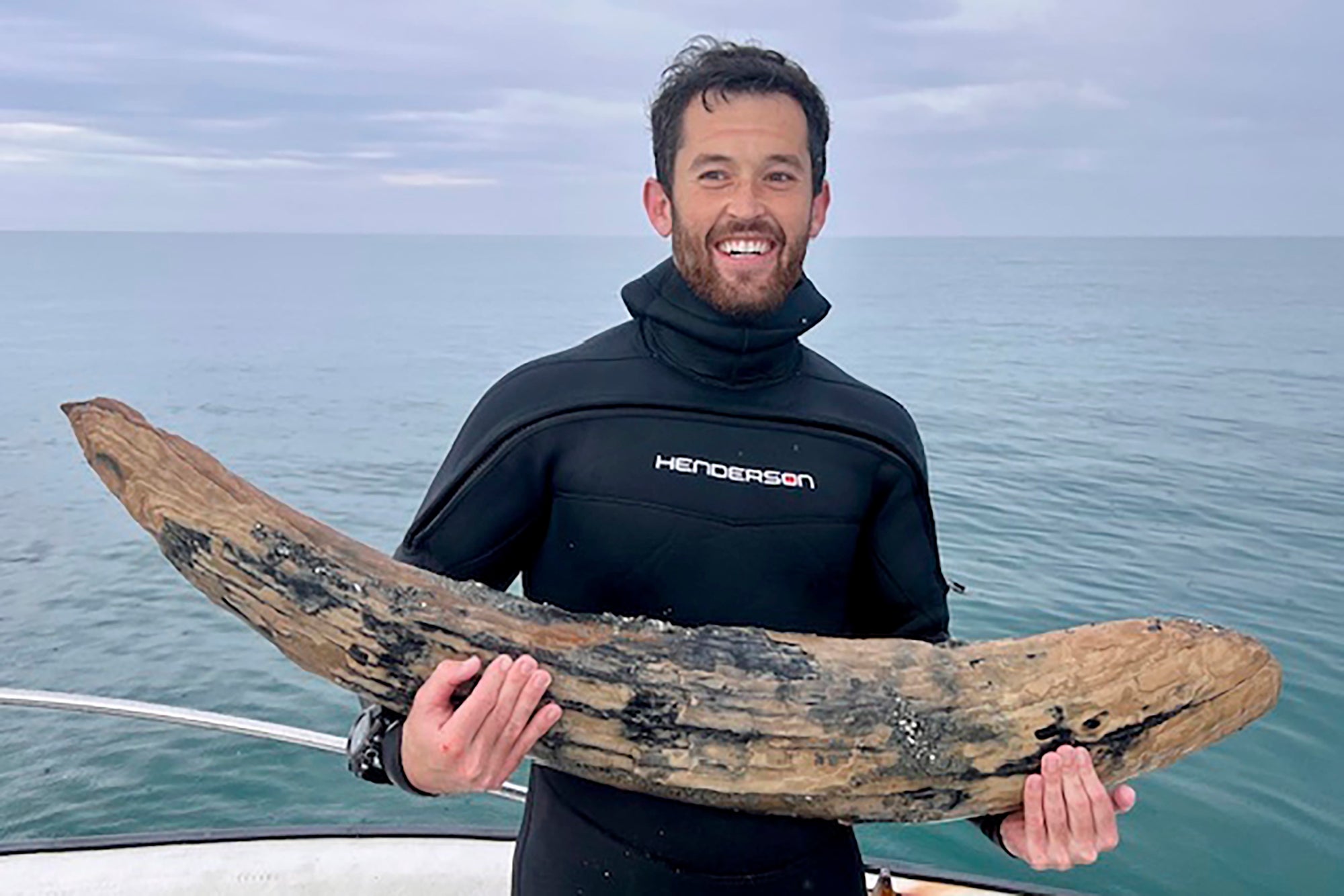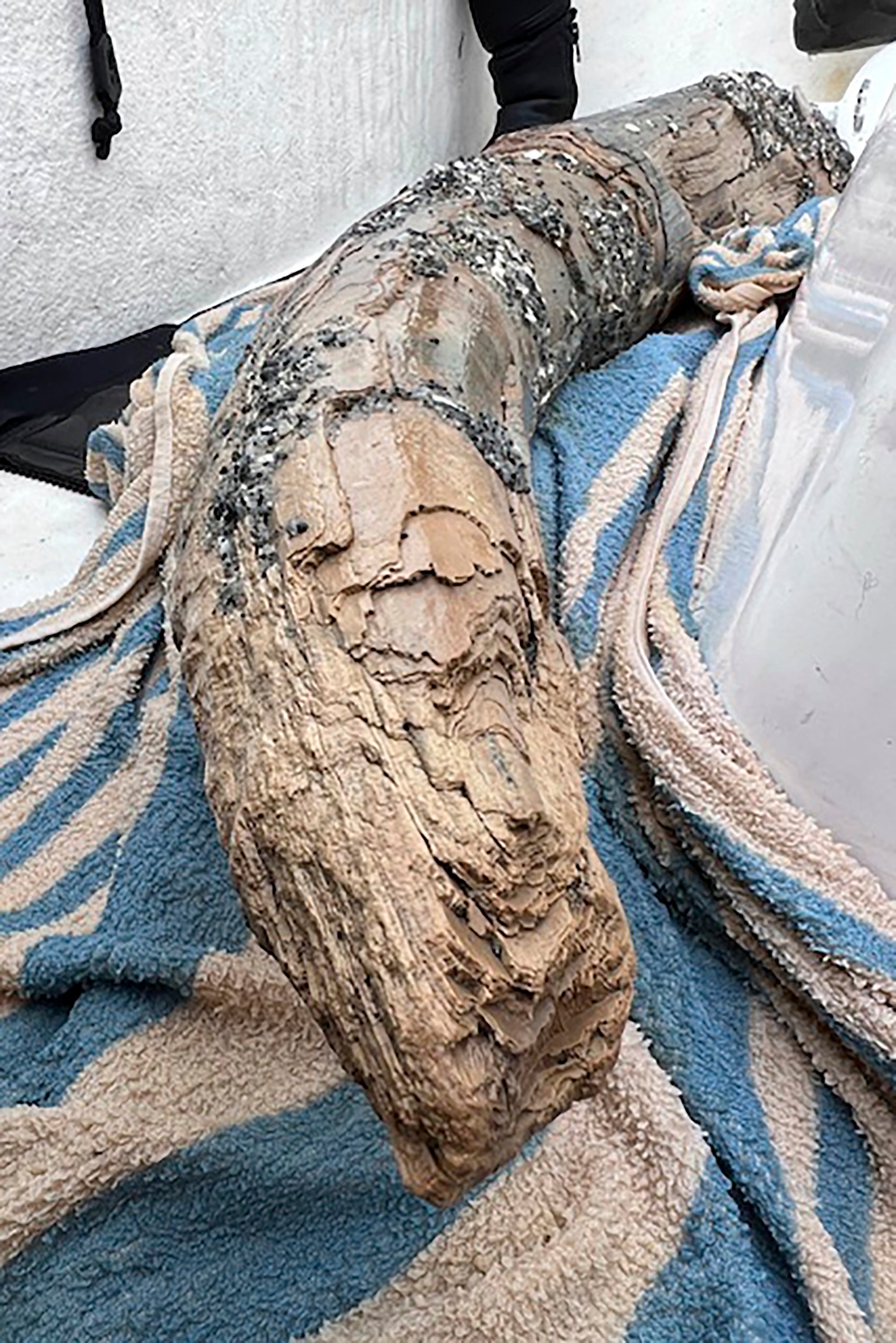Diver thought he found a large piece of wood on the sea bed – turns out it’s something far rarer
Alex Lundberg hopes he can keep his find
Your support helps us to tell the story
From reproductive rights to climate change to Big Tech, The Independent is on the ground when the story is developing. Whether it's investigating the financials of Elon Musk's pro-Trump PAC or producing our latest documentary, 'The A Word', which shines a light on the American women fighting for reproductive rights, we know how important it is to parse out the facts from the messaging.
At such a critical moment in US history, we need reporters on the ground. Your donation allows us to keep sending journalists to speak to both sides of the story.
The Independent is trusted by Americans across the entire political spectrum. And unlike many other quality news outlets, we choose not to lock Americans out of our reporting and analysis with paywalls. We believe quality journalism should be available to everyone, paid for by those who can afford it.
Your support makes all the difference.A diver was shocked to find part of a giant tusk on the sea floor.
At first, fossil-hunting diver Alex Lundberg thought the lengthy object on the bottom off Florida's Gulf Coast was a piece of wood.
It turned out to be something far rarer, Lundberg said: a large section of tusk from a long-extinct mastodon.
Lundberg and his diver companion had found fossils in the same place before, including mammoth teeth, bones of an ancient jaguar and parts of a dire wolf. They also have found small pieces of mastodon tusk, but nothing this big and intact.

“We kind of knew there could be one in the area,” Lundberg said in an interview, noting that as he kept fanning away sand from the tusk he found in April “it just keeps getting bigger and bigger. I'm like, this is a big tusk."
The tusk measures about 4 feet (1.2 meters) and weighs 70 pounds (31 kilograms), Lundberg said, and was found at a depth of about 25 feet (7.6 meters) near Venice, Florida. It's currently sitting in a glass case in his living room, but the story may not end there.

Mastodons are related to mammoths and current-day elephants. Scientists say they lived mainly in what is now North America, appearing as far back as 23 million years ago. They became extinct about 10,000 years ago, along with dozens of other large mammals that disappeared when Earth's climate was rapidly changing — and Stone Age humans were on the hunt.
Remains of mastodons are frequently found across the continent, with Indiana legislators voting a couple years ago to designate the mastodon as its official state fossil. Mastodons are on exhibit at the La Brea Tar Pits in Los Angeles, one of the most significant locations in the world for fossils of the bygone era.
The age of the tusk Lundberg found has not yet been determined.
Under Florida law, fossils of vertebrates found on state lands, which include near-shore waters, belong to the state under authority of the Florida Museum of Natural History. Lundberg has a permit to collect such fossils and must report the tusk find to the museum when his permit is renewed in December. He's had that permit since 2019, according to the museum.

“The museum will review the discoveries and localities to determine their significance and the permit holder can keep the fossils if the museum does not request them within 60 days of reporting,” said Rachel Narducci, collections manager at the museum's Division of Vertebrate Paleontology. “This may be a significant find depending on exactly where it was collected.”
Lundberg, who has a marine biology degree from the University of South Florida and now works at a prominent Tampa cancer center, is optimistic he'll be able to keep the tusk.
“You don't know where it came from. It's been rolling around in the ocean for millions of years. It's more of a cool piece,” he said.
Subscribe to Independent Premium to bookmark this article
Want to bookmark your favourite articles and stories to read or reference later? Start your Independent Premium subscription today.
